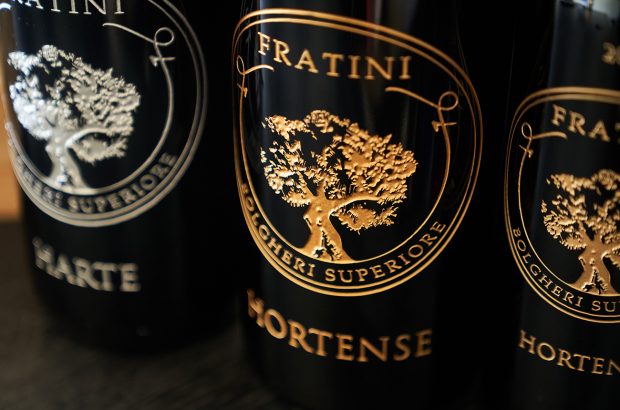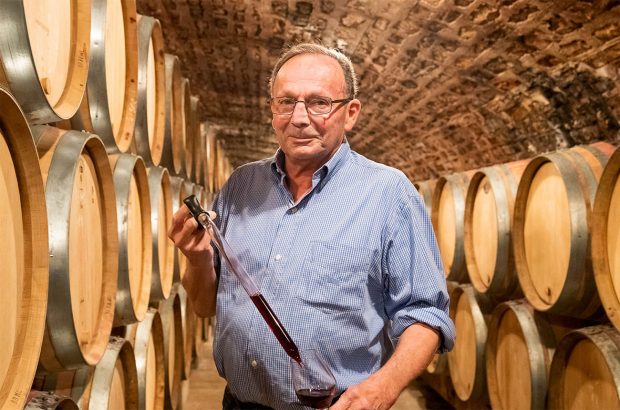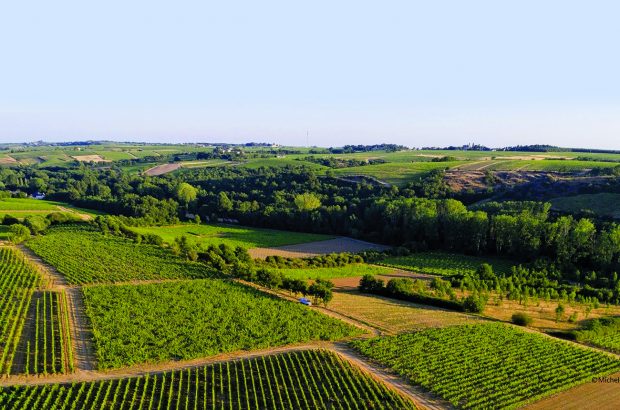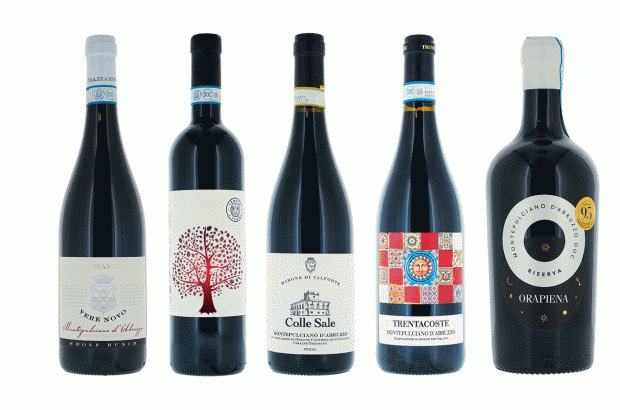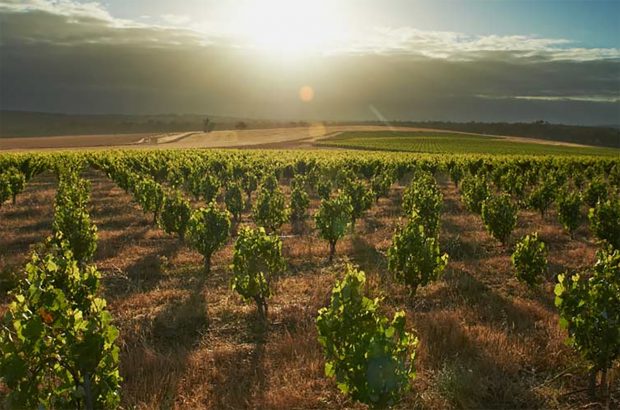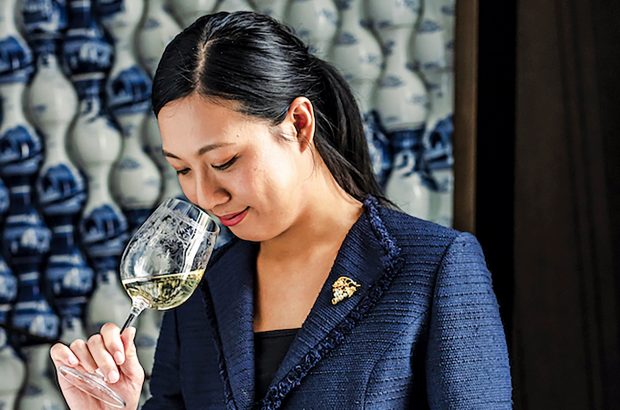- One of the world’s most exciting wine regions.
- Two sub-areas merit a separate appellation contrôleé.
- A classic example of the new breed of superstars.
- Climate has a big influence on style.
When I was a student in the early 1960s, the sort of French wine I could afford to buy out of my meagre grant was so disgusting that I drank beer instead. Since then, there has been a vinous revolution almost as far-reaching socially as the political one that occurred some two centuries previously. The French now drink a great deal less, but better. We drink a great deal more. And not only better, but – despite the regular duty increases – at cheaper prices in real terms than 35 years ago. Walk into any supermarket, pick up any bottle, and it will at least be palatable. In the 1960s, you wouldn’t even have used it for cooking.
It is fashionable to point outside France, to the influence of flying winemakers and the rest, and to maintain that the catalyst for this improvement in quality was external. That, somehow, modern methods were imposed on the winemakers of the Midi and the other cheap wine areas against their will. There may be a grain of truth in this. It certainly seemed to take the white wine growers in Bordeaux an inordinately long time to wake up to the real world. But I don’t think it applies to the Languedoc. The real explanation is multiple and varied, ranging from proper training at wine school, greater awareness of other regions’ wines, the vinous illogic of producing masses of vin ordinaire no one wanted any more, to simple amour propre. Why labour all your life to produce a wine you could not be proud of?
The result is that today’s Languedoc is one of the world’s most exciting wine regions, peopled by a gang of young men and women for whom the pursuit of quality is not so much a question of choice as a categorical imperative. They can work within the letter of the wine laws. They can work within the spirit of them. (If the stipulation is for a blend of three red grape varieties, as it is for a number of appellations, then yes, there was one bunch of Grenache and one of Carignan in the Syrah-dominated cuvée.) Or they can go vin de pays. Personally, I quickly get bored with vin de pays from Cabernet Sauvignon or Merlot, and much of the Chardonnay I find too heavy and tropical for my taste. But I welcome the dry Muscats, the Marsannes, the Roussannes and Viogniers. Yet when it comes to the reds I prefer the indigenous varieties and at least a nod towards the local appellation legislation. Some of the very best come from the Coteaux du Languedoc.
The Coteaux du Languedoc is a curious appellation. It resembles a carcass from which the prime cuts have already been removed. The Languedoc itself stretches from Nîmes to well south of Narbonne. Exclude Corbières, Minervois, Saint-Chinian and Faugères, all appellations contrôlées in their own right, and you are left with the Coteaux du Languedoc – the bits no one thought fine enough to be earmarked as separate appellations when the whole of the Midi was upgraded from VDQS to AC in the 1980s. To complicate matters there are several sub-areas within this sprawling appellation that are considered better than the rest, namely Cabrières, La Clape, Méjanelle, Montpeyroux, Picpoul de Pinet, Pic Saint-Loup, Quatourze, Saint-Christol, Saint-Drézery, Véragues, Saint-Georges-d’Orques and Saint-Saturnin. All have pretentions to producing better wine than the surrounding countryside, rather like the Côtes du Rhône-Villages versus simple Côtes du Rhône. By and large, the claim holds good. But, as it happens, the two very best domaines lie outside these sub-areas.
The two sub-areas that interest me most are Montpeyroux and Pic Saint-Loup. Both, I believe, merit a separate appellation contrôlée in their own right. But, what effect this would have, short of an open invitation to put the prices up? I have no idea. Whether it is that Montpeyroux has a special soil – it seems to be the same stoney calcareous-marl, mixed in parts with gravel, grès and schist that you find elsewhere – or whether, as I suspect, it is the large number of very talented young growers that has put Montpeyroux on the map today is arguable. What is more interesting is how fast this sub-area has come on in a very short space of time. Even Sylvain Fadat, of Domaine d’Aupilhac, did not really get going until 1989. Most of the rest date their independence from more recently. The region lies due east of Montpellier, north of Clermont L’Hérault, above the River Hérault for the most part, and melds into another sub-area, Saint-Saturnin to the northwest. Montpeyroux produces firm, full, rich wines, which cry out for at least five years ageing.
Montpeyroux – the leading domaines
Domaine d’Aupilhac, Montpeyroux, 22ha. Owner: Sylvain Fadat; Coteaux du Languedoc-Montpeyroux; Vin de Pays.
Sylvain Fadat is a classic example of the new breed of Languedoc superstars. He started in 1989, and has quickly made a reputation for himself. His Montpeyroux is produced from 38 per cent Mourvèdre, 28 per cent Syrah, 20 per cent Carignan and 14 per cent Grenache, aged in small foudres and barriques for 17 months, neither fined nor filtered. It is very good. More interesting still, is his Vin de Pays du Mont Baudile from 100 per cent very old Carignan, made in the traditional manner, with a long maceration and lots of pigeage. The yield is 35 to 40hl/ha, and the wine is a revelation to those who consider Carignan one of the bad boys of the vineyard scene.
Mas Jullien, Jonquières, 15ha. Owner: Olivier Jullien; Coteaux du Languedoc-Montpeyroux; Vin de Pays.
The somewhat temperamental son of Jean-Pierre Jullien – he refused to meet me after I criticised some of his wines, but then made sure that after a visit to his father’s estate I was taken to his own cave to taste – is another of the region’s stars. He set up on his own in 1985. The red wine cuvées are called Les Cailloutis (one quarter each Carignan, Grenache, Syrah and Mourvèdre; no barrique); Les Depierre (schistous terroir for the 40 per cent Syrah and half of the 30 per cent Grenache; limestone and gravel soil for the rest of the Grenache and the remaining Cinsaut and Carignan; no barrique either), and Les Etats d’Ame (30 per cent old Carignan, 20 per cent Cinsaut, plus the rest, matured in old barriques for six to 10 months). The last red is very good. In 1991 Olivier Jullien produced a 100 per cent Cinsaut, from old vines. It was a revelation, and it lasted very well indeed.
Domaine Saint-Andrieu, Montpeyroux, 25ha. Owner: Charles Giner; Coteaux du Languedoc-Montpeyroux; various cuvées, the most important of which are Les Roches Blanches, Les Marnes Bleues and L’Yeuse Noir.
Charles Giner was an engineer, taking responsibility for the estate on his father-in-law’s death in 1982. At first, he rented the vines out. In 1992, he retired and took over personally, and from 1995, as he says himself, he began to get it right. Vallougue is a cuvée for early drinking, Les Marnes Bleues comes from 80 per cent Mourvèdre, and Les Roches Blanches from a more normal mixture, but neither see small wood. That is reserved for the L’Yeuse Noir, from 70 per cent Mourvèdre. This wine is rather special.
Other Montpeyroux producers of note
Domaine de L’Aiguelière (Aimé Commeyras at Montpeyroux); Mas Cal Demoura (Jean-Pierre Jullien at Jonquières); Domaine Font Caude (Alain Chabanon at Montpeyroux); Château de Jonquières (François and Isabelle de Cabissole at Jonquières); Cave Coopérative de Montpeyroux (under Domaine de Pérou, Château de Roquefeuil, etc), and Domaine Les Thérons (Jean-François Vallat at Montpeyroux).
Coteaux du Languedoc – Pic Saint-Loup
If Montpeyroux is worthy of upgrading to appellation contrôlée in its own right, mainly as a result of an explosion of young talent in the area, Pic Saint-Loup can surely justify promotion merely by superior terroir. That there happens to be a long and expanding list of good addresses to set one’s target at is an extra plus. The Pic itself, a splendid piece of naked, jagged rock, lies equidistant between Saint-Martin-de-Londres and Valflaunès some 25km north of Montpellier, and the vineyard area lies south and east, stretching between Saint-Gély-du-Fes and Corconne, just over the departmental border into the Gard. This is a cooler area than most of the Languedoc, especially at night in the run up to the vintage, and with a higher average precipitation as well. It is generally not hot enough for Carignan and even in parts for Mourvèdre – according to some locals, anyway. Certainly climate has a big influence on the style of the wine. Ninety percent of the red wine encépagement must come from Grenache, Syrah and Mourvèdre.
The soil is based on clay and limestone, but there are different types: a deep band of red coloured debris, very stoney, lower down; porous more rocky soil containing less clay, and greyer in colour further up the slope, and in parts a much cooler, less well-drained calcareous marl. This latter soil is a good environment for white grape varieties. The appellation Coteaux du Languedoc-Pic Saint-Loup, however, is for red and rosé only. White wines are classified as simple Coteaux du Languedoc. What I find distinctive about the wines that hail from Pic Saint-Loup is that they are substantial without being ‘hot’ or heavy. They are well-balanced and they can be surprisingly sophisticated.
Pic Saint-Loup – The Leading Domaines
Domaine De L’Hortus, Valflaunès, 32 ha. Owner: Jean Orliac; Coteaux du Languedoc-Pic Saint-Loup, including La Grande Cuvée; Vin de Pays.
It was towards the end of the 1970s that Jean Orliac, a young agricultural engineer, discovered an abandoned valley hidden in the shadows of the Pic Saint-Loup. He set about renovating the ancient vine terraces, had an attractive wooden Swiss-chalet-type home constructed by his sister, an architect, and named his new domaine Hortus, after the Latin for garden and one of the local place names. Until 1990, he sent his grapes to the local cooperative. Since then he has become one of the stars of the area. The Grande Cuvée Blanc (Vin de Pays du Val de Montferrand) is made from roughly equal percentages of Chardonnay and Viognier, vinified in barrel, and is one of the Midi’s classiest examples. The red comes from Syrah and Mourvèdre, again more or less equal parts, plus 10 to 15 per cent Grenache and is matured in oak (two-thirds new) for 15 months. This is also an exemplary wine.
Château de Lascaux, Vacquières, 35 ha. Owner: Jean-Benoît Cavalier; Coteaux du Languedoc-Pic Saint-Loup, including Les Nobles Pierres; Coteaux du Languedoc Blanc, including Les Pierres d’Argent.
Lascaux means limestone rock, says Jean-Benoît Cavalier, who took over from his father in 1984 and extricated himself from the local coop some five years later. His vines lie north of the village (he has his cellar near the church) up on a series of very stoney terraces reclaimed from the ubiquitous garrigues. ‘Finesse is everything,’ he says. The top white wine cuvée is made up of Viognier, Marsanne, Rolle and Roussanne vinified in barrique: delicious. Its red equivalent contains 90 per cent Syrah and 10 per cent Grenache and is matured for 12 months in wood, 30 per cent of which is new. This is a wine of size, fine tannins and lots of finesse. It needs time.
Mas Bruguière,Valflaunès, 10ha. Owner: Guilhem Bruguière; Coteaux du Languedoc-Pic Saint-Loup, including Cuvée Vinum de Calcadis, Cuvée Classique and Cuvée Elevée en Fûts de Chêne.
Next door to Hortus, but in the hands of the Bruguière family since the revolution, this vineyard is planted with Syrah, Grenache and Mourvèdre, plus Roussanne for the white wine. The Cuvée Vinum de Calcadis is for the young vines, and is partially vinified by carbonic maceration. The Classic cuvée comes from 60 per cent Syrah and 40 per cent Grenache, while the oaky blend contains less Grenache and 20 per cent Mourvèdre. This wine is intense, harmonious, profound and elegant. One of the Languedoc’s best.
Château de la Roque, Fontanès, 42ha. Owner: Jack Boutin; Coteaux du Languedoc-Pic Saint-Loup, including Cupa Numismae and Cuvée des Vieilles Vignes, Mourvèdre.
The Mas of La Roque has its origins in a Benedictine monastery founded in 1029. The château today, up against the hillsides south of Fontanès, is painted with rather garish magenta shutters, with its cellar carved out of the rock underneath. Jack Boutin bought the estate some 17 years ago and has replanted much of the vineyard with Mourvèdre, a variety he strongly believes in. The white wines are made from Marsanne, Rolle, a little Viognier and Grenache Blanc (none of the latter is in the individual and delicious, gently oaky Clos des Bénédictins). The reds are from Syrah, Mourvèdre and Grenache (again none of the latter in the Cupa Numismae, named after a Gallo-Roman gold coin Jack Boutin found in the vineyard). This special cuvée is tannic, serious and impressive – needs to be kept for five years. The Mourvèdre cuvée, a new introduction, is very good too.
Other notable Pic Saint-Loup producers to look out for
Château de Cazeneuve (André Leenhardt at Lauret).
Ermitage du Pic Saint-Loup (at Cazevieille).
Château L’Euzière (Michel Causse at Fontanès).
Domaine de Lancyre (Durand-Valentin at Valflaunès).
Château de Lascours (Claude Arlès at Sauteyrargues).
Mas de Lavabre (Olivier Bridet at Claret).
Mas de Mortiès (Isabelle and Rémi Duchemin at Saint-Jean-de-Cuculle).
Domaine des Vignes Hautes (SCA la Gravette at Corconne). Jean-Pierre Boillot of Pommard in Burgundy bought land next to La Roque in 1998. His wines should be worth a look.
However, there is more to the Coteaux du Languedoc than just the Montpeyroux and Pic Saint-Loup regions. Here are three more superstar domaines, the best of the lot, in my view:
Prieuré de Saint-Jean-de-Bebian, Coteaux du Languedoc-Cabrières, Pézenas, 27ha. Owners: Jean-Claude Le Brun and Chantal Lecouty; The second wine is called La Chapelle de Bébian.
It was acquired in May 1994 from the legendary – and difficult – Alain Roux, who had built up this domaine with cuttings from Château Rayas, Gérard Chave and Domaine Tempier, this is one of the Languedoc’s great estates. Things are now a little more sophisticated, there being a slight suggestion of new wood, and the beautiful tumble-down priory has been restored. The red wine contains roughly a third each of Grenache, Mourvèdre and Syrah plus a smidgen of all the other Châteauneuf varieties. It is rich, full, profound and long-lasting.
Domaine Peyre-Rose, Saint-Pargoire, 24ha. Owner: Marlène Soria; Coteaux du Languedoc, including Cuvée Les Cistes and Cuvée Clos Syrah Léone.
Peyre is a corruption of pierre (stone); Rose is the name of Marlène Soria’s mother. And rose pink, and a garish one at that, is the colour of the storage tanks. The domaine, hacked out of uncompromising limestone garrigue in the late 1980s, will only be found with difficulty at the end of a beaten track above the village of Saint-Pargoire. There is no wood, no air-conditioning (it has to generate its own electricity) and the yields rarely exceed 20hl/ha. The wine, however, is exceptional. Les Cistes (85 per cent Syrah, 15 per cent Grenache) is usually fresher and more red fruity. The Cuvée Clos Léone (95 per cent Syrah, 5 per cent Mourvèdre) is more black fruity, roasted, gamey. I think these are some of the greatest wines to come out of the Languedoc, certainly some of the most original.
Domaine la Grange des Pères, Aniane,10ha. Owner: Laurent Vaillé; Vin de Pays.
Laurent Vaillé’s family vineyard, abandoned at the time of phylloxera, and not resurrected until 1989, lies near to Mas de Daumas Gassac, and would be entitled to the Coteaux du Languedoc appellation. However, Laurent has planted Cabernet Sauvignon alongside his Mourvèdre and Syrah vines (the blend is 20-40-40), reduces his yield to the minimum, keeps his wine in wood for 26 months, and neither fines nor filters. The results are spectacular: rich and concentrated, fresh and very classy. He also makes a very impressive white wine based on Roussanne.







